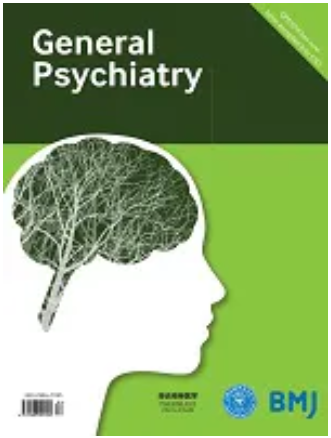MicroRNA-451a 是重度抑郁障碍的候选生物标志物和治疗靶点
IF 5.3
3区 医学
Q1 PSYCHIATRY
引用次数: 0
摘要
背景 越来越多的证据支持微RNA(miRNA)在重度抑郁障碍(MDD)中的作用,但其病理生理机制仍然难以捉摸。目的 探讨微RNA-451a(miR-451a)在抑郁症病理和行为中的作用机制。方法 筛选先前报道的 MDD 患者血清中的异常 miRNA,如 miR-451a,然后在慢性束缚应激(CRS)诱导的抑郁症小鼠模型中进行证实。八周大的雄性 C57BL/6 小鼠通过编码 pri-mmu-miR-451a-GFP 融合蛋白的 9 号血清型腺相关病毒载体在内侧前额叶皮层(mPFC)过表达 miR-451a,然后进行行为和病理分析。最后,还进行了分子生物学实验,研究 miR-451a 抗抑郁的潜在机制。结果 MDD 患者血清中的 miRNA-451a 水平明显较低,与汉密尔顿抑郁量表评分呈负相关。此外,在 CRS 小鼠中观察到血清 miR-451a 与行为绝望或失神之间存在负相关。值得注意的是,在 CRS 易感小鼠的 mPFC 中,miR-451a 的表达明显下调。在mPFC中过表达miR-451a可逆转CRS小鼠树突棘的缺失和抑郁样表型。从机制上讲,miR-451a 可通过靶向转录因子 2 抑制 CRS 诱导的促肾上腺皮质激素释放因子受体 1 的表达,从而保护树突棘的可塑性。结论 综上所述,这些结果突显了 miR-451a 是 MDD 的候选生物标记物和治疗靶点。如有合理要求,可提供相关数据。本文章由计算机程序翻译,如有差异,请以英文原文为准。
MicroRNA-451a is a candidate biomarker and therapeutic target for major depressive disorder
Background Increasing evidence supports the role of microRNAs (miRNAs) in major depressive disorder (MDD), but the pathophysiological mechanism remains elusive. Aims To explore the mechanism of microRNA-451a (miR-451a) in the pathology and behaviours of depression. Methods Abnormal miRNAs such as miR-451a reported previously in the serum of patients with MDD were screened and then confirmed in a mouse model of depression induced by chronic restraint stress (CRS). Eight-week-old male C57BL/6 mice had miR-451a overexpression in the medial prefrontal cortex (mPFC) via adeno-associated virus serotype 9 vectors encoding a pri-mmu-miR-451a-GFP fusion protein followed by behavioural and pathological analyses. Finally, molecular biological experiments were conducted to investigate the potential mechanism of miR-451a against depression. Results The serum levels of miRNA-451a were significantly lower in patients with MDD, with a negative correlation with the Hamilton Depression Scale scores. Additionally, a negative association between serum miR-451a and behavioural despair or anhedonia was observed in CRS mice. Notably, miR-451a expression was significantly downregulated in the mPFC of CRS-susceptible mice. Overexpressing miR-451a in the mPFC reversed the loss of dendritic spines and the depression-like phenotype of CRS mice. Mechanistically, miR-451a could inhibit CRS-induced corticotropin-releasing factor receptor 1 expression via targeting transcription factor 2, subsequently protecting dendritic spine plasticity. Conclusions Together, these results highlighted miR-451a as a candidate biomarker and therapeutic target for MDD. Data are available upon reasonable request.
求助全文
通过发布文献求助,成功后即可免费获取论文全文。
去求助
来源期刊

General Psychiatry
医学-精神病学
CiteScore
21.90
自引率
2.50%
发文量
848
期刊介绍:
General Psychiatry (GPSYCH), an open-access journal established in 1959, has been a pioneer in disseminating leading psychiatry research. Addressing a global audience of psychiatrists and mental health professionals, the journal covers diverse topics and publishes original research, systematic reviews, meta-analyses, forums on topical issues, case reports, research methods in psychiatry, and a distinctive section on 'Biostatistics in Psychiatry'. The scope includes original articles on basic research, clinical research, community-based studies, and ecological studies, encompassing a broad spectrum of psychiatric interests.
 求助内容:
求助内容: 应助结果提醒方式:
应助结果提醒方式:


